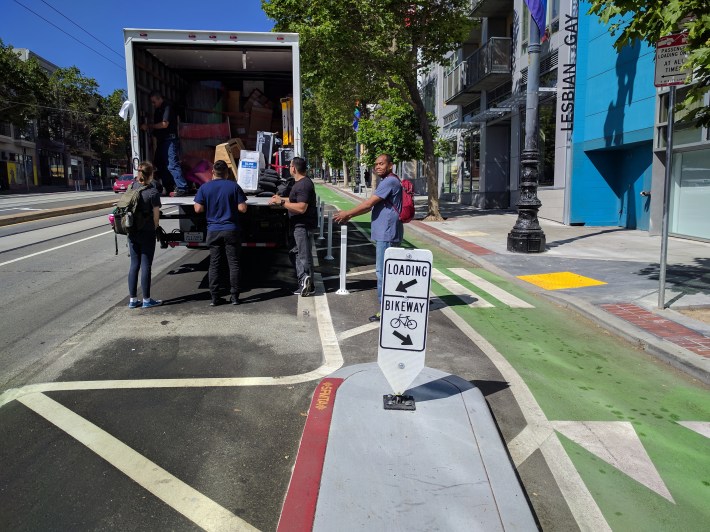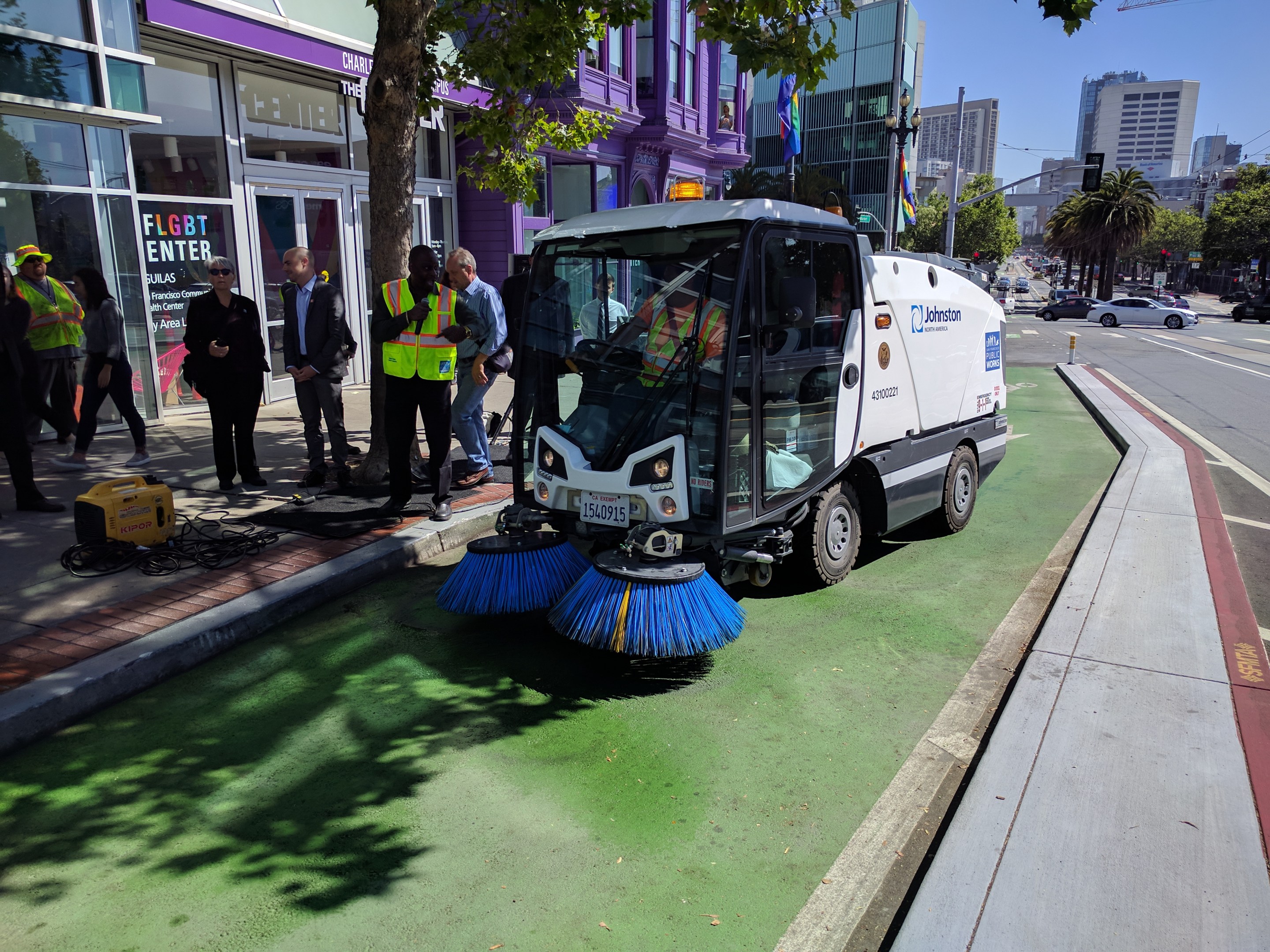Note: GJEL Accident Attorneys regularly sponsors coverage on Streetsblog San Francisco and Streetsblog California. Unless noted in the story, GJEL Accident Attorneys is not consulted for the content or editorial direction of the sponsored content.
San Francisco has purchased its first three 'Vision Zero' street sweepers. These new sweepers, as pictured above, are smaller than normal and have nimble, movable brushes to enable the machines to sweep up San Francisco's fifteen miles of protected bike lanes.
"Protected bike lanes are the gold standard," said Tom McGuire, Director of SFMTA's Sustainable Streets Division, at a press conference this morning at Market and Octavia, next to the city's newest protected bike lane. "But the lanes only work if they are clean and clear."
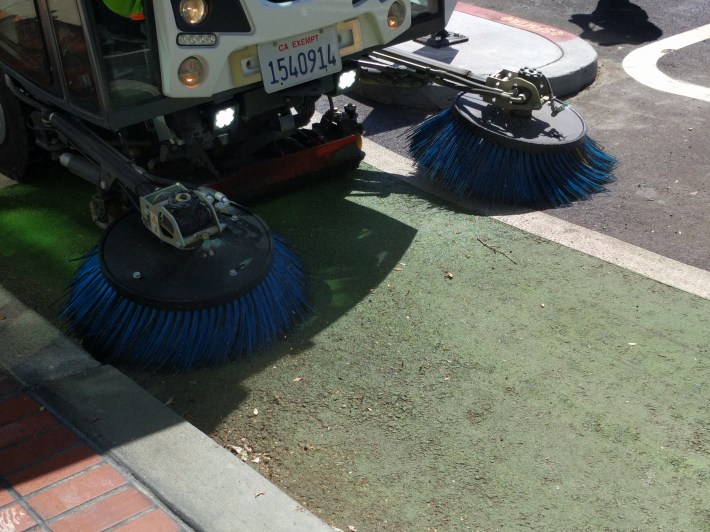
"In designing complete streets, we need to make sure they are maintained," added McGuire.
The new machines, which DPW head Mohammed Nuru described as "like getting a Christmas present," were purchased after the agency tested and experimented with several different types. They eventually decided that Johnston of North America, a North Carolina based-builder, had the best product. Each sweeper costs $150,000--about half the price of a normal street sweeper, said Nuru.
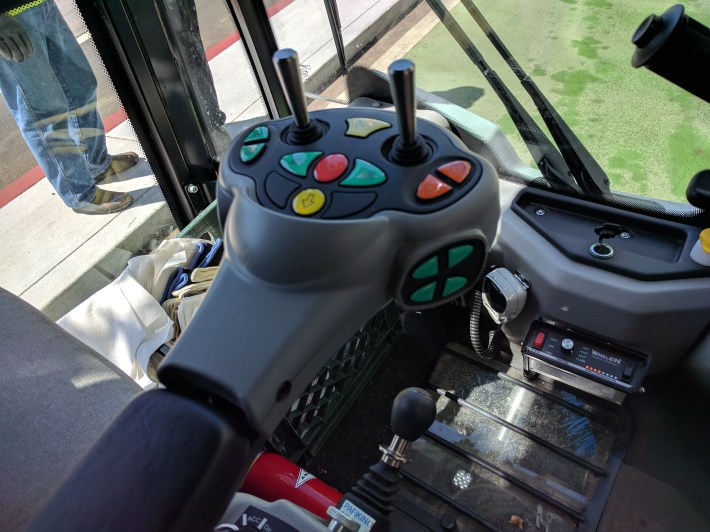
The sweepers spray water on the street, with no detergents, and suck it back up into a tank. Dirty water is offloaded into a support truck that takes it back to a DPW facility for disposal. The sweepers fill their clean-water tanks from fire hydrants, which enables them to stay in the field all day.
Prior to the purchase of these trucks, in some places DPW workers had to sweep bike lanes by hand, which was time-consuming--and meant it wasn't done nearly often enough.
"This equipment will prevent injury or damage due to debris," said the San Francisco Bicycle Coalition's Brian Wiedenmeier, pointing to the newly installed bike lanes on Upper Market. "Biking in San Francisco just got a little bit better."
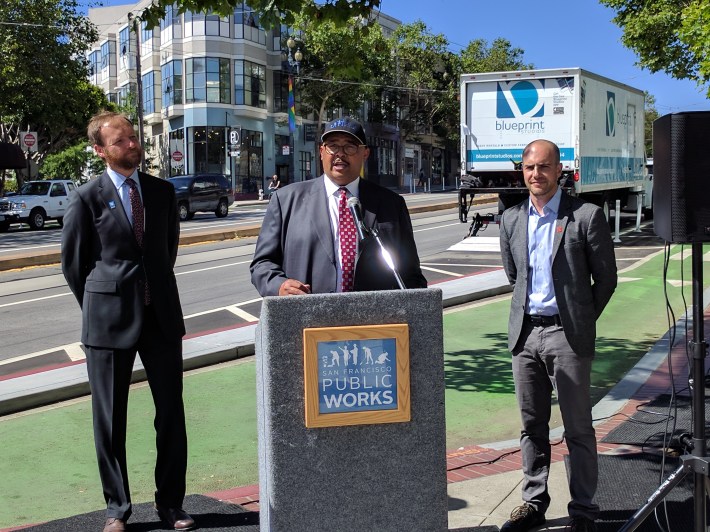
The sweepers are capable of going 30 mph, said Larry Stringer, deputy director of operations for Public Works. That's fast enough that operators can drive themselves around the city to reach far-flung protected bike lanes, such as the one on Cargo Way, or Fell Street, or Upper Market. Sweeping is done at a lower speed, between three and five mph. The plan is to sweep all bike lanes at least once a week, said Stringer.
Nuru added that some bike lanes may get swept two or three times a week, depending on wind, weather, leaves, and complaints. He asked people to call if a lane needs more frequent care.
Officials from DPW and SFMTA said they will buy more of these trucks as needed as the protected bike lane network grows. DPW is at least the second city agency to purchase new trucks more adept at navigating safe-street designs. Last year the fire department showed off its new 'Vision Zero' truck, which is designed to navigate around bike lanes and bulb-outs.
Meanwhile, just behind the press event, a truck was using the new loading zones on the newly upgraded Upper Market without blocking the bike lane. Several participants in the event commented that it was nice to see a small part of Market Street working safely and harmoniously for all users.
